98 results
Chapter 4 - The Theology of the Book of Zephaniah
-
- Book:
- The Theology of the Books of Nahum, Habakkuk, and Zephaniah
- Published online:
- 28 March 2024
- Print publication:
- 04 April 2024, pp 173-238
-
- Chapter
- Export citation
Chapter 5 - Conclusion
-
- Book:
- The Theology of the Books of Nahum, Habakkuk, and Zephaniah
- Published online:
- 28 March 2024
- Print publication:
- 04 April 2024, pp 239-246
-
- Chapter
- Export citation
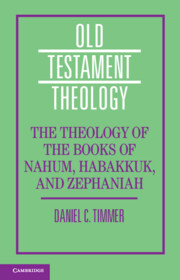
The Theology of the Books of Nahum, Habakkuk, and Zephaniah
-
- Published online:
- 28 March 2024
- Print publication:
- 04 April 2024
5 - Devotional Experience
-
- Book:
- Ways of Living Religion
- Published online:
- 07 March 2024
- Print publication:
- 14 March 2024, pp 180-224
-
- Chapter
- Export citation
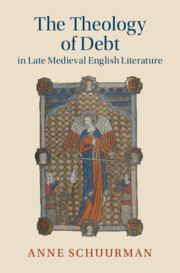
The Theology of Debt in Late Medieval English Literature
-
- Published online:
- 04 January 2024
- Print publication:
- 18 January 2024
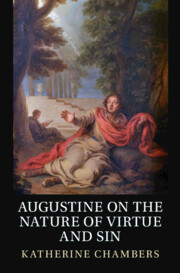
Augustine on the Nature of Virtue and Sin
-
- Published online:
- 10 January 2024
- Print publication:
- 23 November 2023
3 - Political Vices?
-
- Book:
- Augustine on the Nature of Virtue and Sin
- Published online:
- 10 January 2024
- Print publication:
- 23 November 2023, pp 82-118
-
- Chapter
- Export citation
1 - Introducing the Issues
-
- Book:
- Augustine on the Nature of Virtue and Sin
- Published online:
- 10 January 2024
- Print publication:
- 23 November 2023, pp 1-44
-
- Chapter
- Export citation
4 - Augustine’s Definitions of Virtue
-
- Book:
- Augustine on the Nature of Virtue and Sin
- Published online:
- 10 January 2024
- Print publication:
- 23 November 2023, pp 119-162
-
- Chapter
- Export citation
On sin-based responses to divine hiddenness
-
- Journal:
- Religious Studies , First View
- Published online by Cambridge University Press:
- 20 November 2023, pp. 1-15
-
- Article
-
- You have access
- Open access
- HTML
- Export citation
7 - The Work of the Cross
- from Part II - The Incarnation of the Word
-
- Book:
- An Augustinian Christology
- Published online:
- 02 November 2023
- Print publication:
- 16 November 2023, pp 248-278
-
- Chapter
- Export citation
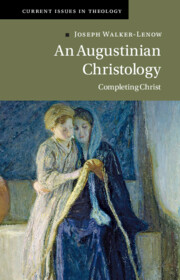
An Augustinian Christology
- Completing Christ
-
- Published online:
- 02 November 2023
- Print publication:
- 16 November 2023
Communal sin, atonement, and group non-agential moral responsibility
-
- Journal:
- Religious Studies , First View
- Published online by Cambridge University Press:
- 09 August 2023, pp. 1-15
-
- Article
-
- You have access
- Open access
- HTML
- Export citation
Determining the Good and Human Culpability: Catholic Catechesis on Overcoming the Anxiety of Sin
-
- Journal:
- New Blackfriars / Volume 104 / Issue 1112 / July 2023
- Published online by Cambridge University Press:
- 01 January 2024, pp. 462-484
- Print publication:
- July 2023
-
- Article
- Export citation
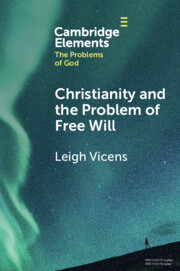
Christianity and the Problem of Free Will
-
- Published online:
- 15 May 2023
- Print publication:
- 08 June 2023
-
- Element
- Export citation
Paschal Triduum
-
- Journal:
- New Blackfriars / Volume 104 / Issue 1111 / May 2023
- Published online by Cambridge University Press:
- 01 January 2024, pp. 261-293
- Print publication:
- May 2023
-
- Article
- Export citation
2 - Sensory Moral Economies
- from Part I - Perspectives and Precepts
-
- Book:
- Sensory Anthropology
- Published online:
- 02 March 2023
- Print publication:
- 09 March 2023, pp 53-76
-
- Chapter
- Export citation
On the prudence of adopting a ‘Sin now; repent later’ policy
-
- Journal:
- Religious Studies / Volume 60 / Issue 1 / March 2024
- Published online by Cambridge University Press:
- 12 January 2023, pp. 17-37
- Print publication:
- March 2024
-
- Article
- Export citation
SIN, COS, EXP AND LOG OF LIOUVILLE NUMBERS
- Part of
-
- Journal:
- Bulletin of the Australian Mathematical Society / Volume 108 / Issue 1 / August 2023
- Published online by Cambridge University Press:
- 23 December 2022, pp. 81-85
- Print publication:
- August 2023
-
- Article
-
- You have access
- Open access
- HTML
- Export citation
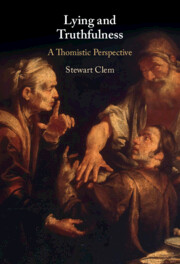
Lying and Truthfulness
- A Thomistic Perspective
-
- Published online:
- 22 December 2022
- Print publication:
- 05 January 2023














